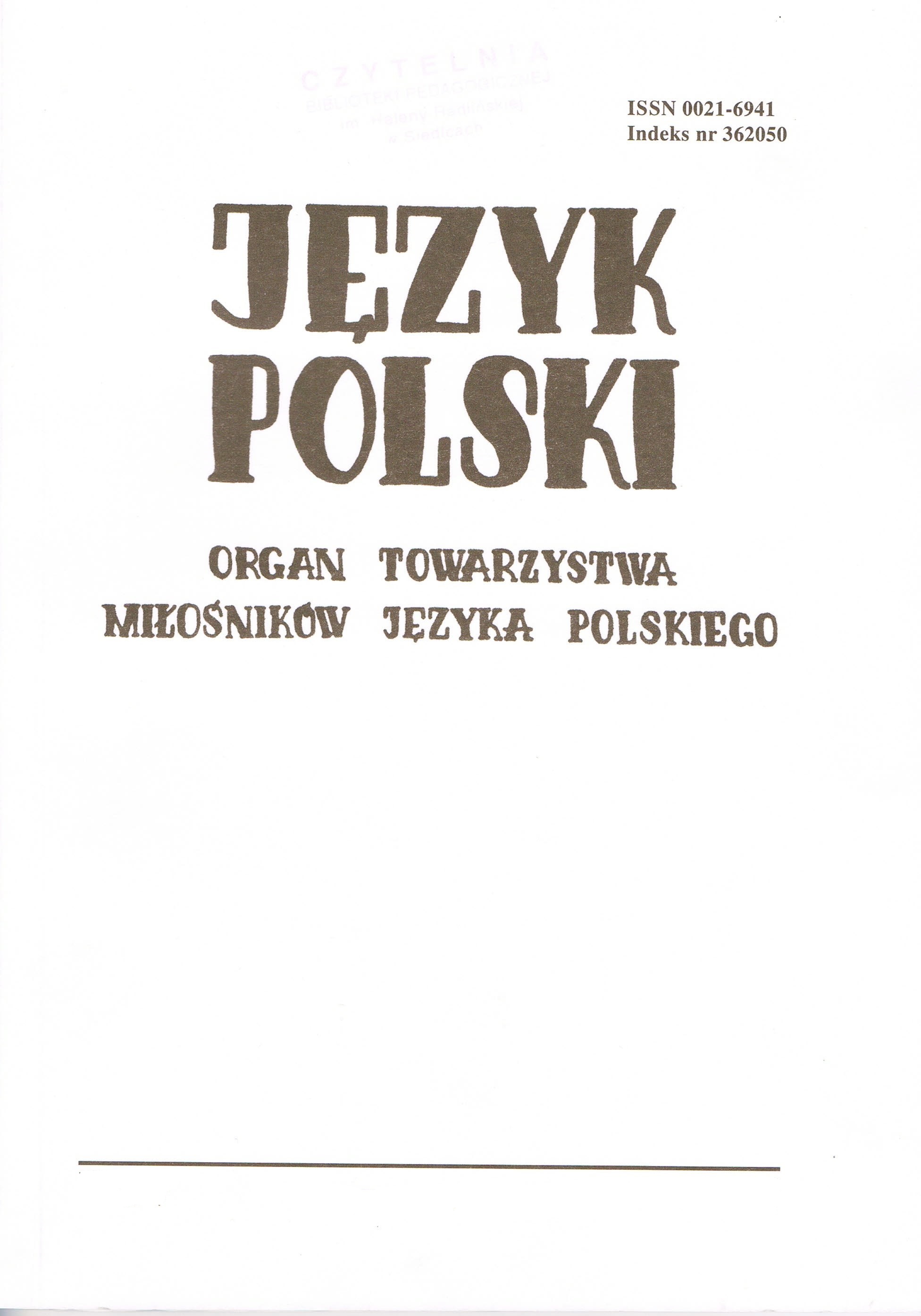
Local dialect texts. From the area of Nowogród in Kurpie
Teksty gwarowe. Z okolic Nowogrodu na Kurpiach
Keywords: local dialect; local dialect text; Kurpie
More...
Keywords: local dialect; local dialect text; Kurpie
More...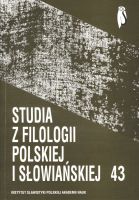
The author presents the possibilities of broad use of advertising slogans and other advertising contents in the teaching of a foreign language. Key advantages of the linguistic material of this type, which the author lists, are primarily expressive syntactic structures – they are easy to understand and memorise, they are expressive and vivid. Another advantage is the language used in advertisements presented on billboards and TV – as it is colloquial. Impudence and expansiveness of advertisements, so arduous for an ordinary recipient, turns out to be very useful in this particular case, because slogans and phrases repeated several times are catchy, and a precisely selected illustration, often accompanied by a tune, activate additionally the remaining senses and perception skills and thanks to these factors, the message is memorised almost automatically. The author underlines that the use of advertising slogans requires a very careful selection and adjustment to the linguistic material, which is supposed to be presented during the lesson. Appropriately selected advertisements provide ready daily life scenes (family life, socialising, doctor’s consultation, workshop staff or tax counsellor advice, etc.), they involve the foreigner in the dialogue, they deliver samples of arguments as well as the means of persuasion. More sophisticated slogans, which aim at making recipients laugh, show creative possibilities of using linguistic means, they familiarise with the Polish sense of humour, with the play with words and situations. To boot, the world of advertisements transfers us into the unrealistic realm, where everything is easy and attainable. When one moves around the world of illusion, he creates a distance between the real world and fiction and sometimes takes the courage to play a part of somebody else, not restricted with any problems. It allows drifting into the world of dreams, constructed in accordance with one’s own concept and activates the students’ creative powers. The author emphasises that the linguistic material from advertising slogans cannot replace other texts, but it is worth using them for the reason of easiness of acquiring communication patterns and the possibilities of creative language use.
More...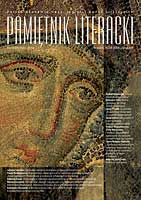
Keywords: medieval prayers; Czech influences on Polish medieval liturgical literature; "Dies irae"
More...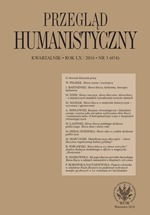
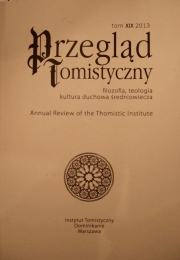
Dla każdego teologa teksty soborowe stanowią jedno z podstawowych źródeł teologicznych. Od 2007 roku mamy pierwszy komplet tekstów soborów powszechnych — od Soboru Nicejskiego (325) po Vaticanum I (1869–1870) — dzię- ki czterotomowemu wydaniu Dokumentów soborów powszechnych pod redakcją ks. Arkadiusza Barona i ks. Henryka Pietrasa. Szczególnie cenny jest kompletny zbiór tekstów źródłowych z towarzyszą- cym mu przekładem. Każdy wydawca wielojęzycznych tekstów zdaje sobie sprawę z ilości pracy, która towarzyszy takiemu przedsięwzięciu. Jest to praca imponująca: dokumenty pierwszych soborów (znajdziemy je w pierwszym tomie obejmującym sobory od Soboru Nicejskiego I do Soboru Nicejskiego II w 787 roku) są przedstawione w większości w układzie trójjęzycznym — oryginalny tekst grecki, starożytny łaciński przekład i polskie tłumaczenie zostały zaprezentowane symultanicznie, co niezwykle ułatwia poruszanie się po nich. Tom III, poświęcony soborom XV-wiecznym, został wzbogacony dodatkowo tekstami ormiańskimi i arabskimi. Ostatnia, czwarta część, ma dwa tomy, które obejmują soborowe teksty od Soboru Laterańskiego V (1512–1517) po Sobór Watykański I.
More...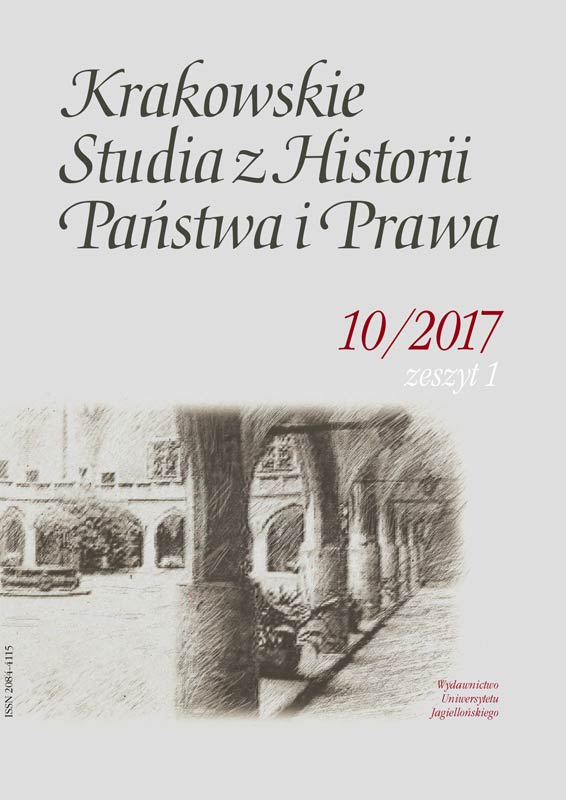
Keywords: AYLH; conference; annual forum; Belgrade; legal history; constitutional history; University of Warsaw; Adam Mickiewicz University of Poznań; University of Bialystok; Jagiellonian University
More...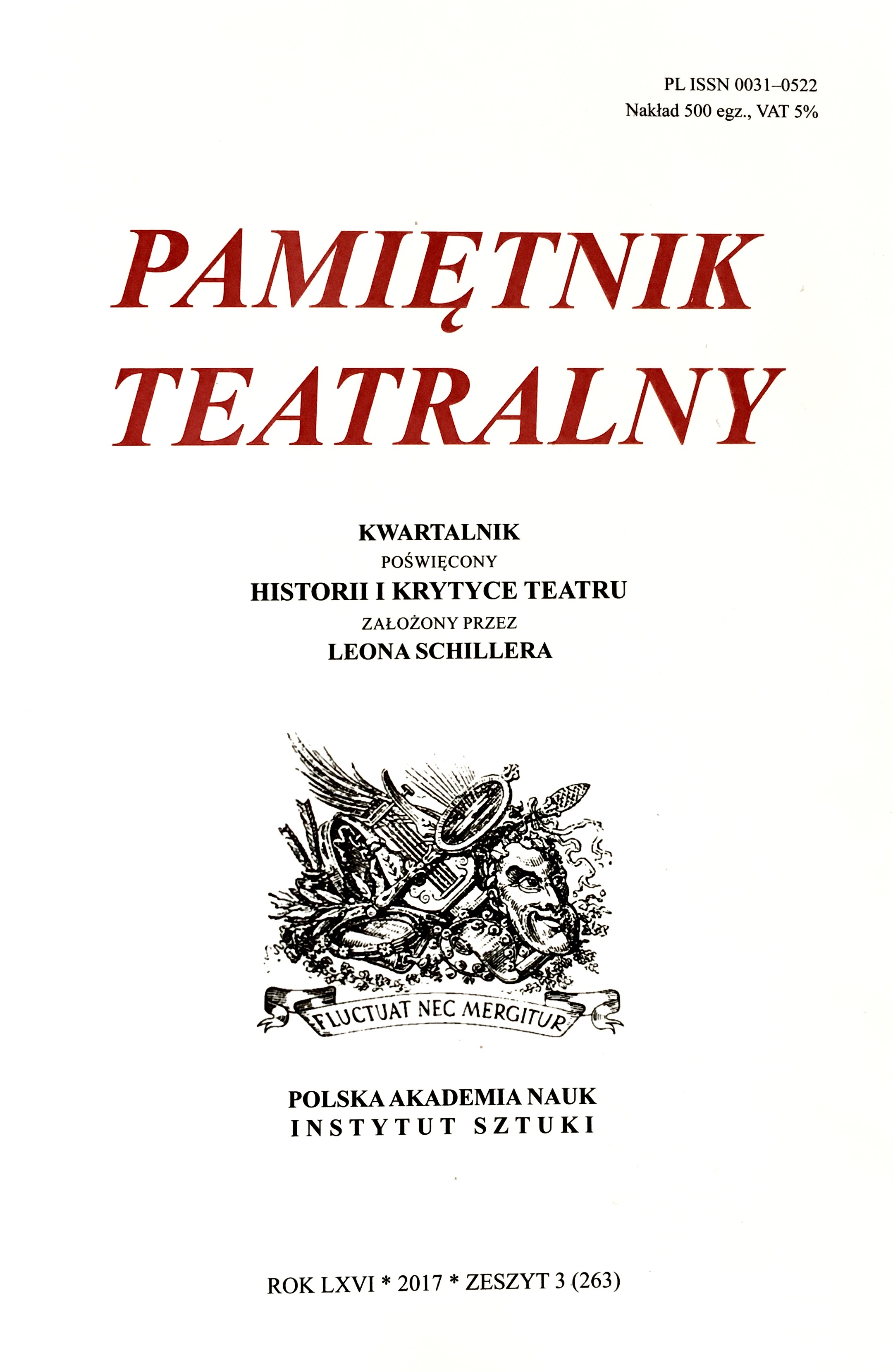
The articles republished now in Pamiętnik Teatralny first appeared in the Lvov Słowo Polskie in 1930–1931. They are reprinted here with an introduction discussing the historical context in which they were written. The texts belong to the early period of work of the outstanding theatre scholar, and they at the same time shed light on a short yet important episode in the history of the Lvov stage that had to do with Leon Schiller. Even though the articles had been inspired by the editor-in-chief of Słowo Polskie, Wacław Mejbaum, they also revealed Terlecki’s own convictions and expressed his involvement in the so-called “battle for Schiller” [batalia o Schillera]. The issue was first to allow Stanisław Czapelski and Zygmunt Zaleski to take over the management of the municipal theatres, as they offered the position of artistic director of the Drama Department to Leon Schiller, and then to provide Schiller with the wherewithal to carry out his creative work, which meant mostly to make some organisational changes within the theatres. And finally, when Schiller had resigned and left Lvov, Terlecki carried on the battle so that the Municipal Council accept Wilam Horzyca as manager, which it did, thus enabling Schiller to come back. The articles reveal the polemical temperament of Tymon Terlecki, his early fascination with the work of Leon Schiller and the way in which their author contributed to the development of the stage in Lvov.
More...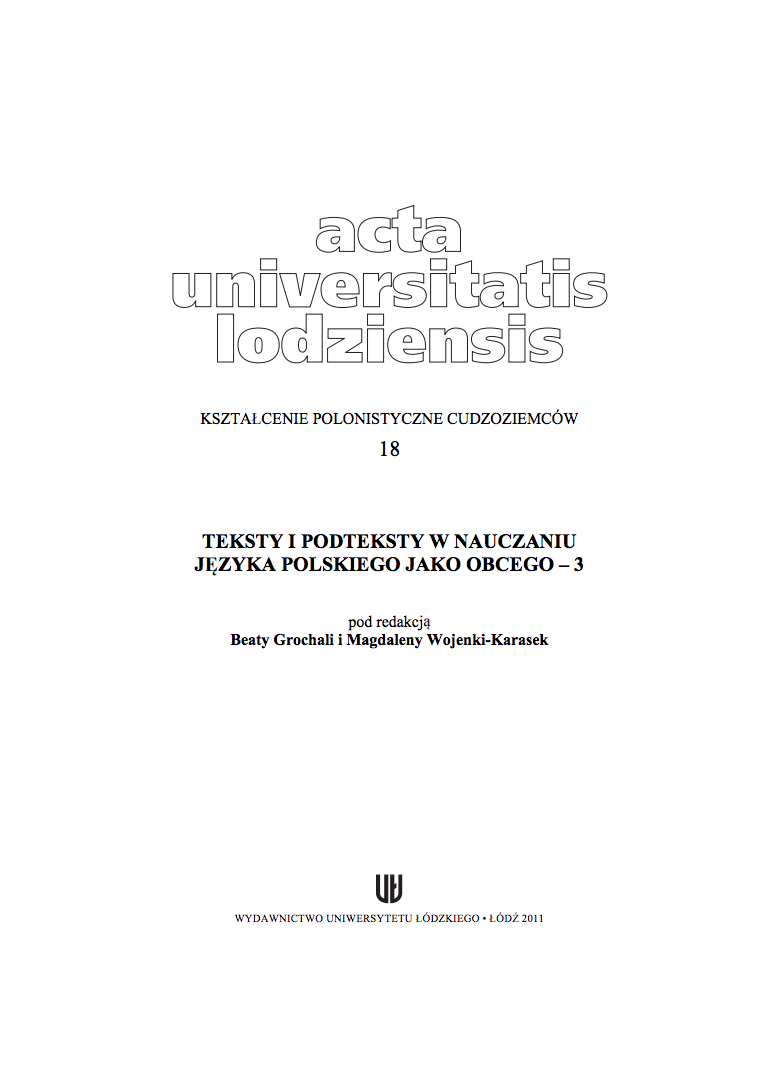
Keywords: cultural studies; linguaculture; movie; scenario; dialogue list; cultural text; Krzysztof Kieslowski; Decalogue; audiovisual; ethics;
Film screening, discussing it, summarizing the plot, and analyzing the problems presented in the screenplay can be important elements of teaching language and culture to foreigners. It is necessary to show films by the directors who guarantee high artistic level. Krzysztof Kieślowski surely is such a director. His films are considered cult films in Poland and abroad. Reading of his screenplays can be an additional element of a class based on a film screenings. During such a lesson, we can put cultural education together with teaching the language.
More...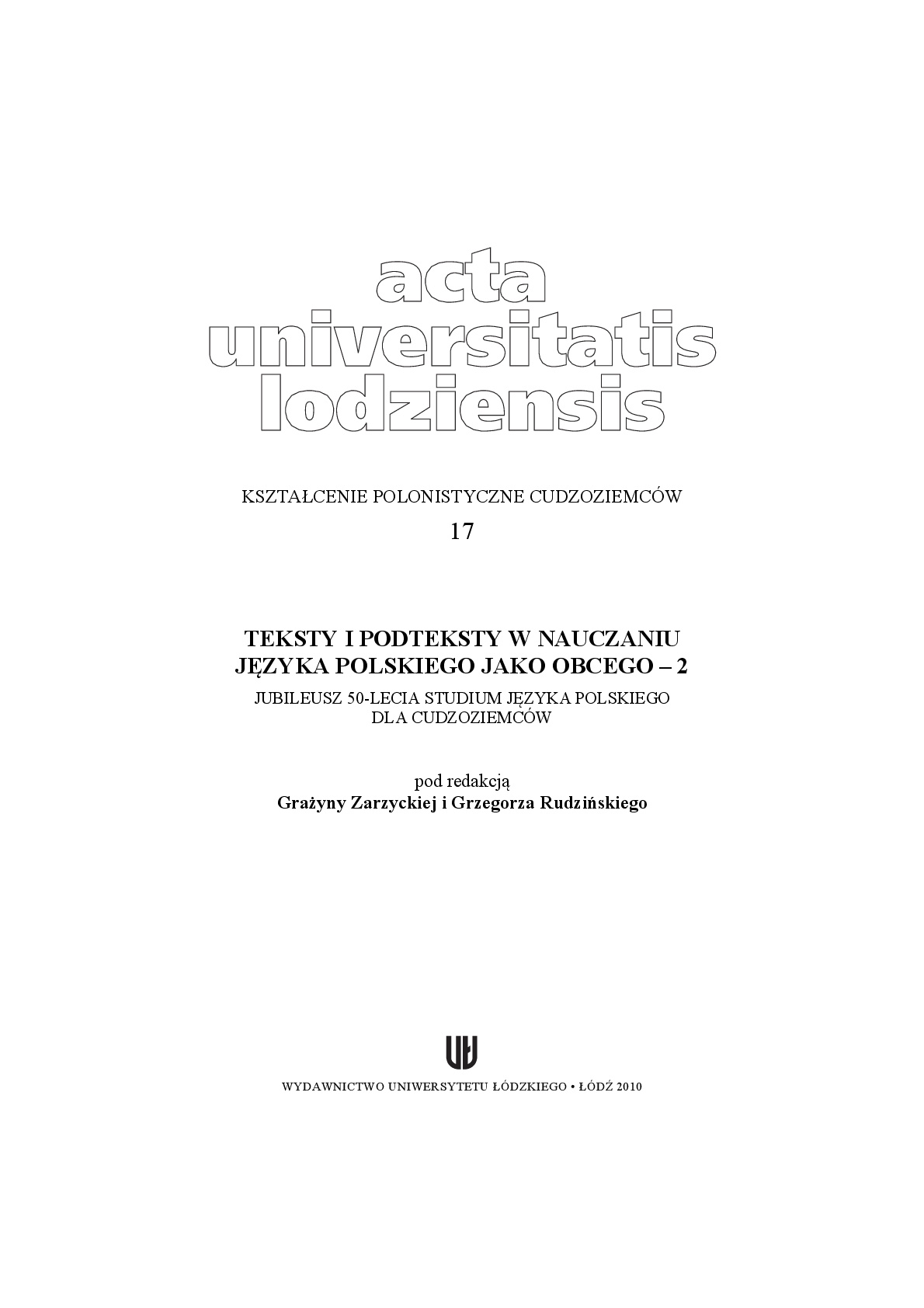
Keywords: Texts of culture; Polish as a foreign language;
Tekst to każde zdarzenie komunikacyjne. W tradycyjnej lingwistyce tekstu uwagę badaczy absorbuje zwłaszcza tekst pisany. Tu poziom zdania nie jest najwyższym poziomem organizacji języka, zaś sam tekst nie musi być traktowany jako jednostka formalna. Postrzega się go nie w kategoriach swoistego produktu, lecz procesu zachodzącego w sposób całkowicie kontrolowany przez uczestników aktu komunikacyjnego. W glottodydaktyce bariera zdania stanowi szczególną granicę oddzielającą nauczanie języka obcego (rozumianego jako inny system porozumiewania się) i rozszerzanie tej nauki o kontekst kulturowy. Na lektoracie nie istnieje równouprawnienie uczestników dyskursu. „Cechą immanentną komunikacji językowej jest – jak dowodzi Anna Duszak (1998: 21) – przekazywanie znaczeń interpersonalnych na linii nadawca – odbiorca. Nie zmienia to faktu, że teksty w różnym stopniu i na różne sposoby ujawniają taktykę samoprezentacji autora i jego stosunek do adresata”. Jeśli więc nadawcą jest nauczający własnego języka lektor czy autor podręcznika, zaś odbiorcą uczący się tego języka cudzoziemiec, to rozpoznawanie typów wypowiedzi, zawartych tam intencji, wzorców kulturowych i społecznych w oczywisty sposób są utrudnione.
More...
Keywords: Texts of culture; practical implementation; cultural program;
Mówiąc o nauczaniu kultury na lektoracie języka obcego (w tym literatury jako medium kultury – jednego z wielu), trzeba odpowiedzieć sobie na kilka pytań: Czy dana lekcja ma być o danym wytworze kultury, czyli stanowić jego• analizę i interpretację? Czy dany wytwór kultury ma być tylko dodatkiem do tradycyjnej lekcji• językowej? Jeśli tak, to dodatkiem do ćwiczeń jakich sprawności, a może tylko ozdobnikiem na końcu lekcji, w jakiś sposób pasującym do tematu lub zagadnienia językowego? Czy dany tekst kultury ma być umieszczony w szerszym kontekście kulturowym?• A może ma być punktem centralnym lekcji, wokół którego skupiać się• będą ćwiczenia poszczególnych sprawności?
More...
Keywords: Polish as a foreign language; useful texts;
Teksty użytkowe są powszechnie wykorzystywane w nauczaniu jpjo. Obecne są w podręcznikach jako pisemne formy wypowiedzi, które uczący się mają opanować (Zwolski 1984; Awdiejew, Dąmbska, Lipińska 1992; Wójcikiewicz 1993), lub też jako materiał wyjściowy, służący rozwijaniu zintegrowanych kompetencji językowych1 . Stąd też stają się również przedmiotem glottodydaktycznej analizy teoretycznej (zob. np. Lipińska 2003; Krawiec 2004, 2006; Foland-Kugler 2005; Zaśko-Zielińska 2005; Majkiewicz 2001; Witkowska- -Gutkowska, Grochala 2008). Celem tego artykułu jest zasygnalizowanie problematyki wykorzystania tekstów użytkowych w nauczaniu jpjo w świetle ustaleń, zawartych w Europejskim systemie opisu kształcenia językowego: uczenie się, nauczanie, ocenianie (ESOKJ 2003) oraz prezentacja ćwiczeń, które zostały przeze mnie przygotowane na bazie tekstów o charakterze reklamowym.
More...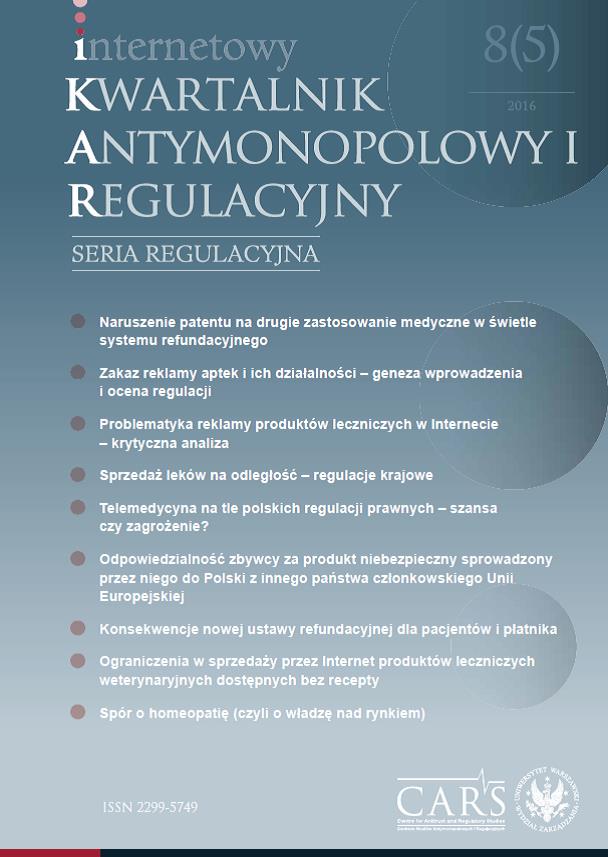
Keywords: Invention; patent, medicinal products; reimbursement
This paper relates to patent infringements on second medical use in the light of competition law and the reimbursement system. It is inspired by two recent rulings delivered by English and Dutch courts. They have considered whether the sale of generic drugs may be regarded as an infringement of a patent relating to a second medical use (not indicated on the labels) in situations where the facts of the case showed that these drugs have actually been used in a way covered by this patent (i.e. off-label use). In the light of these rulings, the main purpose of this paper is to answer the question whether it is appropriate, in the light of competition law, to limit the scope of the patent on second medical use in situations where drugs based on the substance are subject to reimbursement, in order to provide wider access to these drugs to patients
More...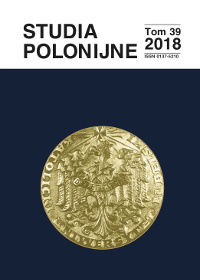
Keywords: Polish Catholic Mission in France; Polish priests; “Pole in France”
The best opportunity to manifest the bonds with the homeland by our compatriots was provided by the organizational structure of Polish religious care, that is, a network of permanent and temporary pastoral centers. Thanks to the cooperation of the Episcopate in Poland and France, and the association of French employers in the main Polish immigrant communities, a permanent structure of Polish pastoral ministry was established. On May 13, 1922, the Mission of Catholic Poland in France was founded. From the very beginning Polish priests had a fundamental influence on the organization of Poles in exile. Based on the established pastoral centers, the priests ministered among their countrymen, inspired local Polish associations to defend the social interests of emigrants and strengthen Polishness. All these challenges were attempted by the Polish Catholic Mission under the guidance of Rector Wilhelm Szymbor. The scale of these challenges is exemplified by, among others, the following document: Minutes of the Second Meeting of Polish Fathers, working among Polish emigrants in France, held on November 15, 1923 at the premises of the Polish Mission in Paris. A copy of the document can be found in the Archive of the Polish Catholic Mission in France. The original document in the form of typescript is stored in the Archdiocesan Archives in Gniezno.
More...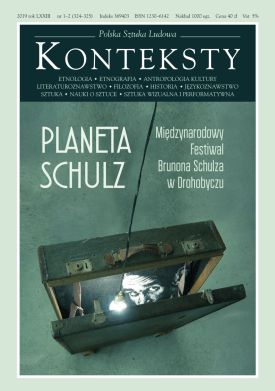
Keywords: Bruno Schulz;literature
The unique diversification of the creative profile of Bruno Schulz generates a quest for specific criteria of evaluation aimed at those horizons, which as if provoke the artist’s un-uniform oeuvre. The idea of bringing up to date the author’s intention in the awareness of the recipient, originating from the context of the hermeneutic conception conceived by Gadamer, accentuated by Hans Robert Jausss, and developed by Wolfgang Iser and Hans Blumenberg, formed the treatment of literature primarily as a sui generis intellectual provocation: by situating the text not only within the perspective of the past but also of the future we render it to a certain extent a historical fait accompli. We measure the entire persona of the Galician author by means of separate texts, fractions of fragmentary reminiscences or correspondence; nonetheless, it is worth keeping in mind that each intellectual “text” becomes not one of the small “deaths of the author” but a special form of his transformation, preserving these ingested and accomplished earlier. The article stresses the conspicuous symphonic character of Schulz’s achievements, the organic similarity of all his multi-genre artistic works (painting and graphic art, verbal images, epistolary collections), the openness of a ”horizon” of all varieties of perspectives, which creates a palimpsest of sorts based on the inter-text and inter-media qualities. Such an approach towards the special form of Schulz’s ”artistic language” (in the widest meaning of the term) and towards describing his general poetics is quite natural. We perceive the unconditional, fanatical recreation of the world and man, which permeates all his drawings, literary texts, letters, and behaviour, and which constitutes the indivisible palimpsest of the portrait of his personality. Hence the reception of the variegated oeuvre of Bruno Schulz should be uniform - each particular text within the context of all the others – as a sui generis integral entity in accordance with the comprehension of such a paradigm proposed by Gérard Genette through the intermediary of its second degrè, containing multi-level factors. In the case of the Schulzian heritage such an approach suggests more precise connotations.
More...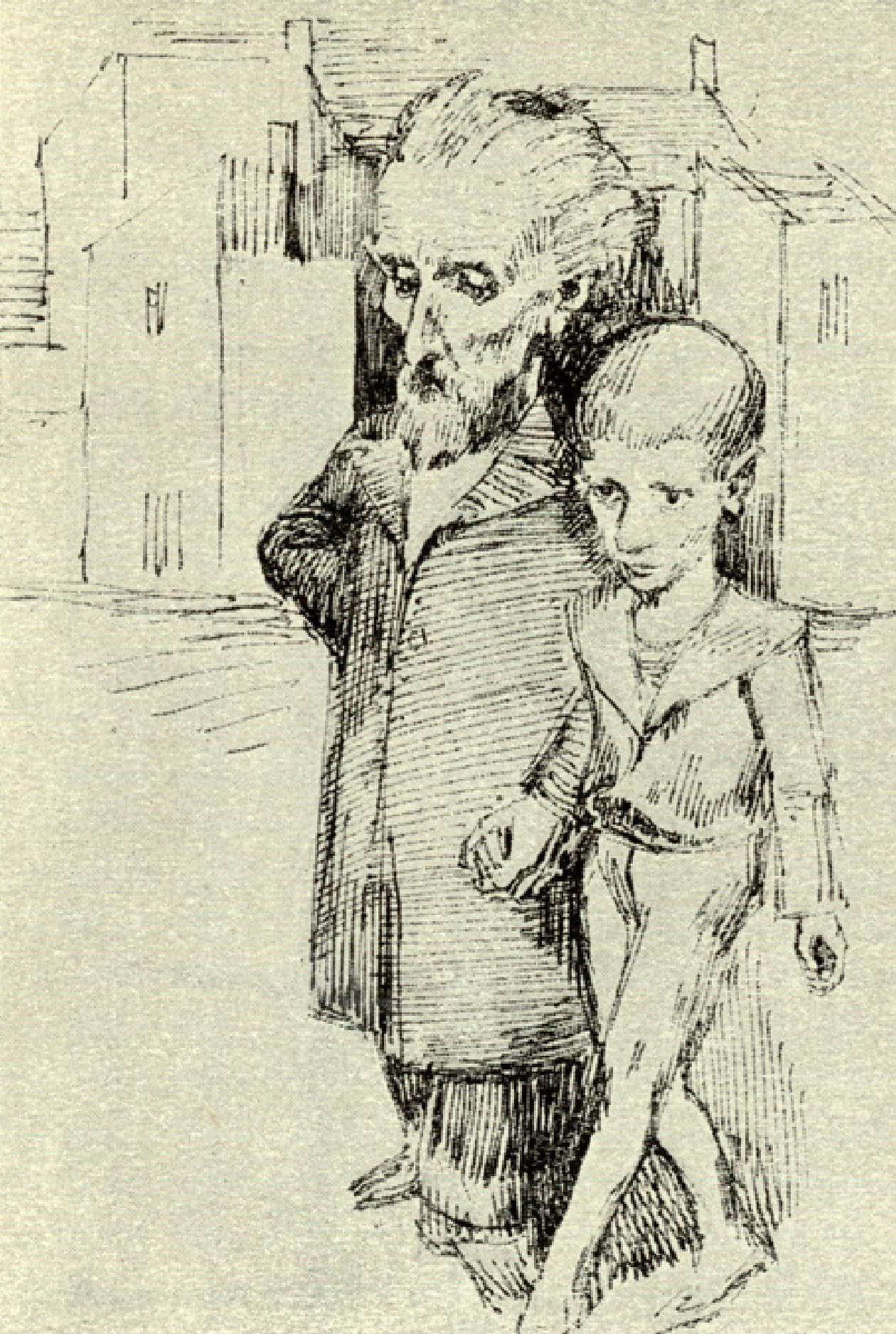
Keywords: jidysh literature;debora vogel;
Examples of three programme articles published in the consecutive issues of Tsushteyer:1929, issue 1; 1930, issue 2; 1931, issue 3.
More...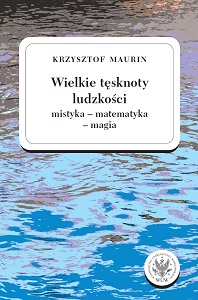
Keywords: Polish School of Mathematics; differential; mysticism; magic; kabbalah; monadology
The chapters devoted to mathematics on the one hand express the view about the organic relation between mathematics and humanities, and on the other, show that mathematics has the language of symbols which allow to encompass a much wider area of thought.
More...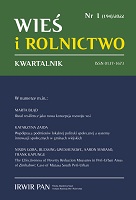
Keywords: second homes; multifunctional rural development; non-agricultural functions of villages; tourist and recreational functions of villages; opinions of local people;
The phenomenon of second homes is increasingly discussed in the literature on rural development. Research to date indicates both its negative and positive aspects for rural development. The authors decided to investigate this phenomenon through interviews conducted with permanent residents of the popular, in terms of tourism, municipality of Czernichów (Silesian Voivodeship), where the number of second homes is steadily increasing. The main objective of the study was to present the phenomenon of second homes as assessed by the community members of Czernichów municipality. Based on the literature in the field, both positive and negative effects of the development of second homes in the functional-spatial and social context were identified, which were verified by a questionnaire survey of the inhabitants’ opinion. The vast majority of respondents gave a positive assessment of second homes and its impact on the functioning of the village. There were also a few negative opinions, which confirmed the ambiguous impact of second homes on rural development. However, the second home phenomenon in the municipality of Czernichów were clearly accepted by the inhabitants.
More...Keywords: the second demographic transition; forms of marital and family life; matrimonial phenomena; reproductive phenomena; big cities;
The transformations of contemporary societies, including the broadly understood modernisation, have an impact on the sociological, psychological, and demographic image of the family. The concepts explaining the transformations of matrimonial and procreation phenomena emphasise the individuality of people, their emotions, feelings, specific needs, as well as the understanding of families in terms of institutions and interests. The theory explaining contemporary changes in the areas of marriage and reproduction is the concept of the second demographic transition, formulated by Dirk van de Kaa and Ron Lesthaeghe at the turn of the 1970s and 1980s. In explaining the importance of factors favouring the postponement of marriage and reproduction, reference was also made to the economic and sociological concepts of civil partnership and marriage, and the increase in preferences to limit the number of children. The article presents the changes in the forms of marriage and family life in cities, using the available statistical data in the period of 1990–2019. The aim of the study was to identify and assess changes in the area of the matrimonial and reproductive behaviour in cities in Poland, especially in large urban centres. The analysis of statistical data shows that the transformations of matrimonial and procreation phenomena vary in time and space. The results obtained from the analysis of matrimonial and reproductive phenomena in large cities confirmed the conclusions of other studies, but also provided new insights into changes in demographic behaviour. The clear disproportions in the dynamics of demographic changes in cities of various sizes, occurring at the beginning of the transformation period, are weakening. In many areas of matrimonial and reproductive changes, the pace of change is currently higher in medium-sized cities. The division of the country into the east, the south-east, the west, the and north which have been different in terms of demographic behaviour – has been confirmed for years. Nevertheless, it is the inhabitants of large urban agglomerations that assimilate new patterns of behaviour the fastest, which is why the spatial differentiation of the forms of marital and family life does not fully correspond to the above-mentioned spatial arrangement. Depopulation processes and the transformations of the demographic structure are a direct implication of contemporary population transformations related to the second demographic transition, especially in terms of unfavourable trends in the ageing of the society and low birth rate. The deepening demographic decline in most urban centres and the ageing of the society forces us to pursue an urban policy which would be focused on the challenges related to this situation. Demographic challenges are of a structural and countrywide dimension, hence they should primarily be of interest to the demographic and social policy of the state. This does not mean, however, that they cannot also be taken into account in the case of urban policy – understood as the territorial dimension of both state policies regarding urban development and development policies conducted by individual cities.
More...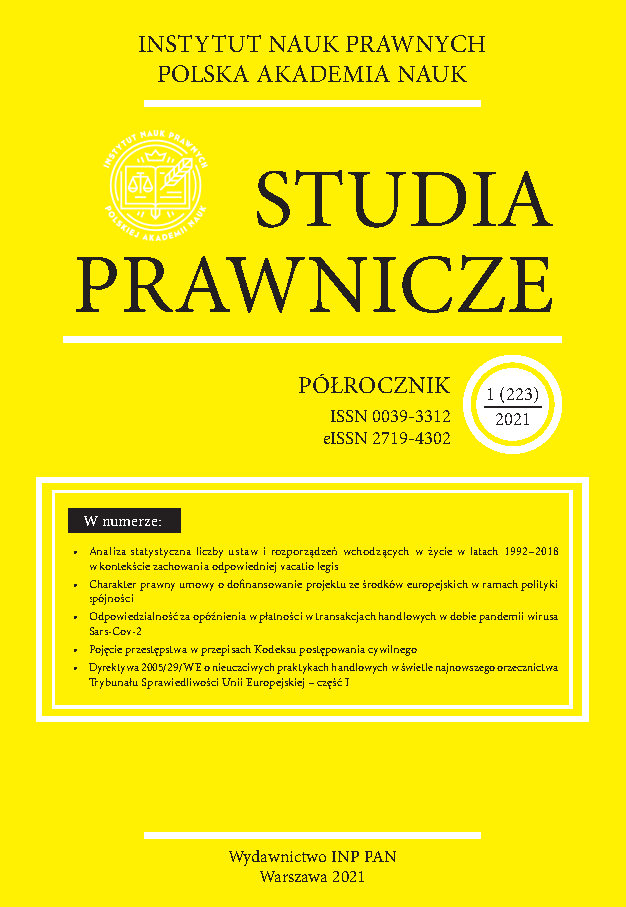
Keywords: patent protection; second medical use
The notion of “second or further medical use” encompasses inventions whose the subject-matter is new medical use of a known product (substance). It means that the product as such, as well as its other medical use, are a part of the state-of-the-art. In our times patent protection of this kind of inventions is common but the concept and model of this protection are differentiated. They mainly depend on whether it is allowed or banned to patent medical procedures (medical methods). The article concerns the patent protection of the second medical use under European patent system, i.e. the system based on EPC and on national patent systems of the countries which are the parties to this Convention. In all these systems, patenting medical methods is banned. The aim of the article is to present the process of establishing the model of patent protection of the second medical use in these systems, and to discuss some of the main hesitations and controversies resulting from this model. They mainly concern the question of compliance of this model with the rules and concepts of patent protection which until recently seemed indisputable.The subject matter and purpose of this kind of inventions evoked also additional questions and problems. In particular, the discrepancy between the patent protection of these inventions and the system of reimbursement of pharmaceuticals, which is common in the countries-EPC parties, is clearly visible. The analysis leads to the conclusion that the apparent difficulties in protecting such patents illustrate the negative consequences of treating legal instruments as tools for achieving specific objectives, but operating in a legal and economic vacuum.
More...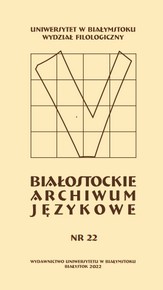
Keywords: legends; project; intercultural; foreign language teaching; teaching Polish;
The implication of legends, fairy tales or stories to the teaching of foreign languages is not a new idea: the usefulness of such texts teaching Polish as a foreign language has already been emphasized in the literature of the subject. Researchers point to an important fact that manifests itself in teaching: we teach the language to adults, but we teach them as if they were children. The essential attributes of the texts in question make us refer to our personality and cultural identity, because fairy tales and legends are deeply rooted in us and co‑create an intercultural and intergenerational bridge between the past and the present. They are also the cradle of linguistic and cultural interactions with family, people of the same nationality, but also people from other cultures and languages. These texts show how much we grow into the culture of a given society and adopt traditional patterns of behavior, and hence they prove that the cycle of linguistic and cultural transmission is permanent. The cultural message takes place by introducing young generations to tradition and fundamental values of national, European and world culture.
More...